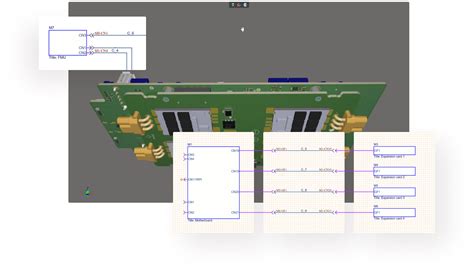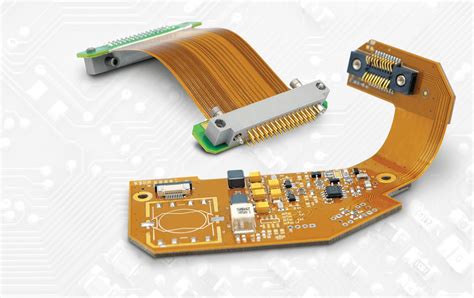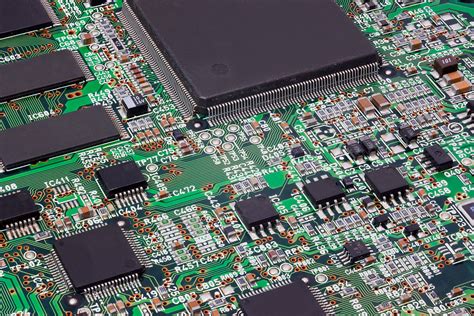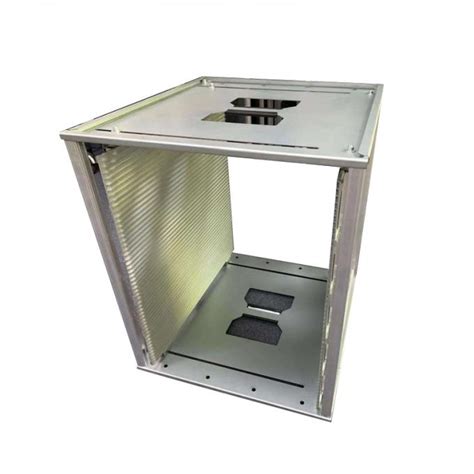Mastering Altium Multiboard Assembly: A Comprehensive Guide
Key Takeaways
Understanding Altium’s capabilities for multiboard assembly is vital for elevating your overall PCB assembly process. By focusing on effective component placement, you streamline the design workflow and enhance productivity. The right techniques can lead to a significant reduction in assembly time and cost while maintaining quality. Key considerations include ensuring that all boards communicate well in the layout, as this can impact the functional performance of the final product. It’s also essential to be aware of common challenges, such as alignment issues and signal integrity problems, which can arise during the assembly phase. Leveraging advanced features within Altium can foster better collaboration among team members, allowing for a smoother transition from design to PCBA. Ultimately, keeping these takeaways in mind will not only help in optimizing performance but also ensure that complex projects are handled with precision and efficiency.
Introduction to Altium Multiboard Assembly
In today’s fast-paced electronic landscape, mastering Altium Multiboard Assembly is essential for engineers and designers who aim to excel in PCB assembly. This powerful tool offers advanced features that facilitate the design and integration of multiple boards, making it ideal for complex projects. When embarking on your journey into pcba, it’s important to first understand how the multiboard design workflow operates. This includes the initial schematic capture, where individual circuit board designs are created, followed by the essential step of defining interconnections between those boards.
Proper organization and a structured approach are key to successfully navigating this process. Emphasis should be placed on effective component placement, as this can significantly impact both assembly efficiency and performance outcomes. During the assembly phase, employing best practices—such as utilizing a systematic approach for testing and validation—will enhance accuracy and speed.
“A well-placed component reduces board space issues and optimizes signal integrity,” is a guiding principle worth remembering in multiboard setups.
Taking full advantage of Altium’s advanced features can significantly streamline real-time collaboration among team members working on different aspects of the project. By adopting these strategies early in your PCB design process, you are primed to mitigate potential challenges that may arise during the assembly phase.
Investing time in learning these tools will ultimately empower designers to create more sophisticated models with robust functionality, leading to improved efficiency and higher performance in final products. This foundational understanding will serve to reinforce your skills in handling complex pcb assembly projects with confidence.
Understanding the Multiboard Design Workflow
The multiboard design workflow is pivotal in the realm of PCB assembly. It involves a series of strategic steps that enhance the efficiency and effectiveness of the entire design process. The initial phase typically encompasses thorough planning, where designers should ensure that each board aligns with the overall system requirements. This includes defining pertinent specifications and interfacing between boards to guarantee a seamless interaction. Following planning, designers embark on schematic capture, translating functional requirements into digital representations, which serve as guidelines for the subsequent PCBA stage.
Once schematics are established, it’s crucial to focus on component placement across multiple boards. Placement must consider factors like electrical performance and mechanical constraints, ensuring that each board operates harmoniously within the larger system. Additionally, utilizing powerful tools within Altium can facilitate real-time collaboration between teams, allowing for adjustments and optimizations that may significantly impact performance outcomes.
Moreover, during this workflow, attention should be directed towards electrical integrity and signal integrity testing. Conducting these tests early in the design process can help identify potential issues before assembly begins, thus reducing the risks associated with complex projects. Each phase of this workflow contributes to a robust pcb assembly strategy, ultimately culminating in enhanced reliability and performance of your final product. As technology advances, adapting this workflow to include innovative techniques will further streamline assembly processes and optimize results across diverse applications.
Best Practices for Effective PCB Component Placement
When it comes to PCB assembly, effective component placement is crucial for maximizing performance and ensuring a smooth assembly process. A well-thought-out layout not only enhances signal integrity but also simplifies the manufacturing of the PCBA. Here are some best practices to consider:
Prioritize Functionality: Begin by placing components based on their functionality and the signal flow. Critical components like power regulators and high-speed ICs should be strategically located to minimize noise and interference.
Group Related Components: Arrange components that are electrically related near each other. This reduces the length of traces, thereby minimizing potential issues with inductance and capacitance.
Utilize Defined Zones: Assign specific zones on your layout for types of components, such as analog, digital, and power devices. This helps in organizing the space efficiently and allows for easier debugging later in the design process.
Follow Design Standards: Adhering to established design rules, including spacing requirements and pad sizes, will ensure that your PCB can be assembled without complications during the manufacturing phase.
Consider Thermal Management: Place heat-sensitive components away from heat sources, and ensure proper airflow across your design to maintain optimal temperatures during operation.
| Best Practice | Benefits |
|---|---|
| Prioritize Functionality | Enhances signal integrity |
| Group Related Components | Reduces trace length |
| Utilize Defined Zones | Eases debugging process |
| Follow Design Standards | Avoids manufacturing complications |
| Consider Thermal Management | Maintains optimal performance |
By integrating these best practices into your next PCB assembly project, you will not only enhance the overall structure but also influence its long-term reliability and performance positively. Remember that a thoughtful approach to component placement is a cornerstone of effective PCB design, leading to more efficient production cycles in your PCBA endeavors.
Techniques for Streamlining Assembly Processes
When it comes to pcb assembly, it’s essential to implement effective techniques that can enhance efficiency and accuracy. One approach is to utilize automated tools for the pcba process, which can significantly reduce human error and save time. For instance, integrating machinery that automates component placement can lead to a more precise setup, allowing for faster assembly cycles. Additionally, standardizing component footprints can greatly simplify the design process, ensuring compatibility and reducing the need for adjustments during assembly.
Furthermore, maintaining organized documentation throughout the pcb assembly process is crucial. Using a centralized system to store design files, component specifications, and assembly instructions ensures that all team members have access to the most up-to-date information. This not only minimizes confusion but also accelerates decision-making during complex projects.
Collaborative tools within Altium can further enhance communication between design and assembly teams. By leveraging features such as real-time collaboration on design files, teams can address potential issues proactively rather than reactively, which is vital in large-scale pcba projects. Adopting these techniques will not only streamline your assembly processes but also contribute to optimized performance in your overall PCB initiatives.
Optimizing Performance in Complex PCB Projects
In the realm of PCB assembly and PCBA, optimizing performance for complex projects is essential for achieving reliable end products. One of the primary considerations is ensuring efficient component placement on the multilayer boards. By strategically locating parts to minimize trace lengths and reduce electromagnetic interference, designers can significantly enhance signal integrity. Moreover, utilizing advanced simulation tools within the Altium framework can facilitate early detection of potential performance issues, allowing for timely adjustments in the design stage.
Incorporating thermal management strategies is another crucial aspect. High-density designs often struggle with heat dissipation, which can compromise functionality. Employing thermal relief techniques and selecting materials with suitable thermal properties can help mitigate these challenges. Additionally, innovative techniques such as mixed technology board design allow for optimal integration of various components, ensuring that each section of the board operates at peak efficiency.
Furthermore, leveraging automated pcba processes can streamline assembly and minimize human error. This integration not only speeds up production but also allows for more precise alignment of components during placement. As complexity increases in PCB designs, continual refinement of these methods and practices becomes imperative to ensure that performance meets or exceeds specifications while maintaining cost-effectiveness.
Ultimately, a comprehensive approach that combines effective layout strategies, robust thermal management solutions, and efficient assembly processes will lead to a marked improvement in performance across complex PCBA projects. Embracing these principles facilitates a more seamless flow from design to production while fostering innovation within the field of PCB manufacturing.
Troubleshooting Common Multiboard Assembly Issues
When working with Altium Multiboard Assembly, encountering challenges is not uncommon, especially when dealing with complex projects where multiple printed circuit boards (PCBs) need to work in harmony. One of the foremost issues is the alignment of components across different boards. It is essential to ensure that the pcb assembly is meticulously planned to avoid misalignment—a common culprit in many assembly failures. To address this, it’s advisable to employ detailed placement guidelines and leverage the built-in design rules available in Altium.
In addition, connectivity problems can arise during the integration of boards. This can often be traced back to poor PCBA design, where inadequate signal integrity and grounding considerations are overlooked. Regularly reviewing the circuit design and ensuring robust routing practices are in place can significantly mitigate such risks.
Another area of concern can be thermal management; overheating components can lead to performance degradation or failure during operation. To tackle this, one should incorporate thermal analysis early in the design phase and make use of thermal vias or dedicated heat dissipation techniques as required.
Lastly, inconsistent documentation may lead to implementation confusion among assembly teams. Keeping comprehensive and clear instructions for every aspect of your pcb assembly process—ranging from component specifications to testing procedures—can greatly enhance overall efficiency and reduce errors during the construction and testing phases.
By proactively identifying these issues and embracing a thorough troubleshooting process, you can not only refine your approach but also elevate the quality of your multiboard designs significantly.
Advanced Features of Altium for Enhanced Collaboration
In today’s intricate landscape of PCB design, ensuring seamless collaboration among team members is crucial for the success of any PCB assembly project. Altium offers a suite of advanced features that foster communication and synchronization, making it easier for engineers to work together effectively. One notable capability is the integration of real-time collaboration tools, which allows multiple users to make live edits while viewing changes instantaneously. This significantly reduces the risks of miscommunication and ensures that everyone stays on the same page throughout the design process.
Furthermore, Altium’s version control functionality enables teams to track changes and revert to previous iterations if needed, safeguarding against potential errors that could hinder efficient pcba execution. The use of centralized libraries also enhances collaboration by ensuring that all team members access consistent components, thus streamlining the PDCA (Plan-Do-Check-Act) cycle. When everyone utilizes a single source for component management, it not only boosts productivity but also minimizes discrepancies in component selection.
Moreover, integrating cloud-based solutions supports remote collaboration, empowering teams to access files from anywhere while maintaining security protocols. This flexibility allows organizations to leverage global talent effectively without being constrained by geographical boundaries. By utilizing these advanced features, teams can elevate their design workflows and enhance overall efficiency in pcb assembly, leading to optimized pcba outcomes as they work together on complex projects.
Conclusion: Elevating Your PCB Design Approach
As we wrap up our exploration into Altium Multiboard Assembly, it’s essential to recognize that mastering pcb assembly techniques can significantly influence the success of your projects. The integration of multiple boards in a single design offers unparalleled advantages, especially in complex applications where performance and reliability are paramount. By implementing the best practices discussed, you can effectively enhance your PCBA workflow, ensuring that components are placed optimally for functionality and manufacturability.
Moreover, leveraging advanced features within Altium fosters collaboration among teams, making it easier to tackle challenges associated with multiboard designs. When you focus on clear communication and exceptional documentation throughout each step of the assembly process, you not only streamline your operation but also pave the way for smoother troubleshooting when complications arise.
In conclusion, by prioritizing both design rigor and assembly efficiency, you elevate not only your project outcomes but also your overall approach to PCB design in today’s ever-evolving landscape of technology. This commitment to continuous improvement will undoubtedly lead to successful projects in a variety of fields.
Conclusion: Elevating Your PCB Design Approach
In the realm of PCB assembly, mastering Altium Multiboard Assembly is essential for enhancing the efficiency and effectiveness of your design process. By integrating best practices and advanced techniques, you can significantly streamline your PCBA workflow. Understanding the intricacies of the multiboard design can lead to better component placements, reducing waste and improving functionality. Consistent attention to troubleshooting common issues enables teams to overcome challenges swiftly, thereby fostering a smoother assembly process. Moreover, leveraging Altium’s advanced features facilitates better collaboration among engineers, allowing for a seamless exchange of ideas and designs. This collaborative approach not only enhances individual skills but also contributes to the overall success of complex PCB projects. As you refine your strategies in pcb assembly, keep in mind that continuous learning and adaptation are crucial for staying ahead in this ever-evolving field.
FAQs
What is Altium Multiboard Assembly?
Altium Multiboard Assembly focuses on handling the complexities of complex PCB projects that involve multiple interconnected boards. This approach streamlines the pcb assembly process, ensuring precision and efficiency throughout the design and assembly phases.
How can I optimize my PCBA process?
To optimize your pcba, it’s essential to adopt best practices like thoughtful component placement and meticulous workflow management. Each element should be carefully considered to minimize errors during assembly while maximizing coherence across boards.
What are common challenges in multiboard assembly?
Some of the most frequent issues in multiboard assembly include alignment errors, signal integrity problems, and component misplacement. Understanding these challenges can help you implement effective solutions, ultimately enhancing the performance of your designs.
Are there specific techniques for streamlining assembly processes?
Yes, techniques such as utilizing standard connectors, screen printing for solder paste application, and effective use of machine vision systems can significantly streamline pcb assembly processes. These methods help ensure higher accuracy and consistency in production.
How can I troubleshoot multiboard assemblies effectively?
To troubleshoot effectively, focus on systematic testing of individual boards before final integration. Ensure that all connections are secure and verify power levels and signals throughout the entire system. By addressing potential issues at each stage, you can ensure a smooth overall operation.







